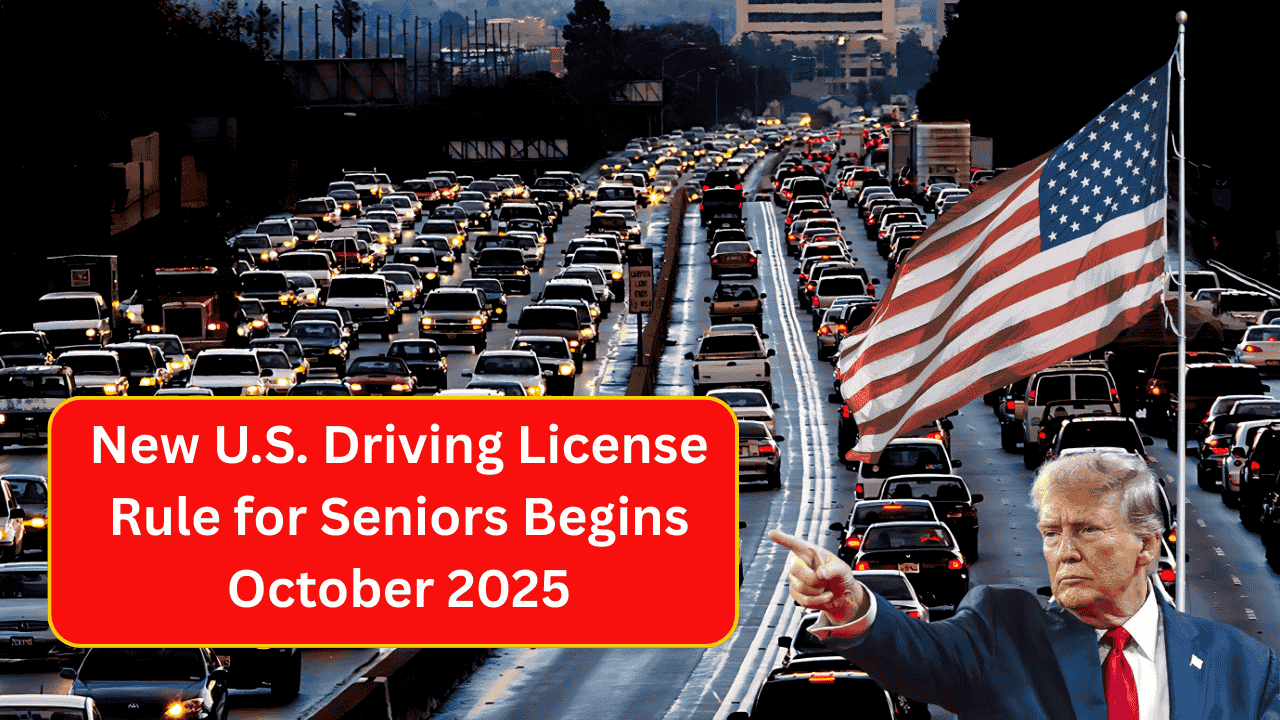The United States is witnessing a landmark change in how senior citizens maintain driving privileges. Starting October 2025, a new nationwide rule for driving license renewal affects every American driver aged 70 and above. This reform, introduced by the U.S. Department of Transportation, aims to balance road safety with senior independence by implementing stricter renewal protocols and additional competency checks. As this law rolls out, millions of elderly drivers are adapting to updated requirements that target better roadway safety for all.
New U.S. Driving License Rule for Seniors Begins October 2025
The first headline for this major change centers on the new U.S. driving license rule for seniors beginning October 2025. This reform is essential for anyone over 70 who intends to continue driving, transforming the renewal process from a routine task into a more comprehensive check on vision, reaction time, and cognitive health. The federal guideline is now mandatory nationwide and affects how licenses are renewed, what assessments are included, and how reported concerns are addressed.
New Rule for Seniors Over 70
| Point | Detail |
|---|---|
| Age Group | Senior drivers divided into three categories: 70–79, 80–86, and 87+ |
| Renewal Frequency | 70–79: Every 4 years; 80–86: Every 2 years; 87+: Annually |
| Vision Requirements | Mandatory vision test for all, online possible in some states |
| Cognitive Assessments | Reaction time and cognitive screening for ages 80+ |
| Driving Assessments | Full in-person evaluation for 87+, may include simulated driving tests |
| Reporting System | Doctors, family, or community can report concerns about driver fitness |
| Restricted Licenses | Daylight-only or local-area driving permissions available if full renewal isn’t granted |
Why These Driving Changes Matter
The new law is driven by a demographic shift: over 48 million Americans aged 65 and above actively drive. While many seniors are safe drivers, age can impact reflexes, vision, and decision-making. The new tiered system rewards ability rather than age, allowing competent seniors to retain independence but also introducing structured pathways for monitoring risks, addressing medical concerns, and restricting driving where needed.
Senior Experience: Mixed Reactions
Initial feedback among seniors is varied. Some find in-person testing challenging, especially for rural residents. Others feel reassured, like Mary Thompson, age 82, who passed her reaction test and believes her family now feels more secure knowing she’s fit to drive. States with higher senior populations such as California, Florida, and Texas report longer DMV wait times—but officials say adaption is improving and delays are decreasing.
How the Reporting System Works
One controversial aspect is the reporting process. Doctors, close relatives, or community members can flag individuals if they believe a driver poses a risk. While privacy advocates urge caution to prevent abuses, most reports so far stem from medical professionals noticing health changes. Seniors have the right to appeal or request reevaluation if flagged, ensuring fairness and due process.
Differences Across States Still Apply
Though the rule is federal, specific implementations vary. Some states offer telehealth options for vision exams while others require in-person testing. Progressive states like New York employ mobile DMV vans at senior centers—making it easier for elderly citizens. In contrast, states such as Arizona have seen more appeals from seniors contesting failed assessments and restricted licenses.
Restricted Licenses: A Compromise Solution
For seniors who don’t pass all assessments, restricted licenses have emerged as a practical alternative. These may allow driving only during daylight or within designated local areas. Many seniors, such as George Lopez of New Mexico, view these restrictions positively, acknowledging their own limits and prioritizing safety while maintaining some independence.
Transportation Alternatives Gain Traction
With the stricter renewal process, many elderly Americans are exploring alternative transportation. Ride-share apps and senior ride programs are growing in popularity. Urban centers have expanded access and discounts, while advocacy groups highlight the need for reliable options in suburban and rural settings, ensuring seniors remain connected and independent.
- The new federal senior driving law is effective from October 2025, impacting all U.S. states.
- Most seniors can renew licenses if they meet vision and competency tests; restricted licenses offer middle ground.
FAQs – New U.S. Driving License Rule for Seniors Begins October 2025
Q1: Is the new senior driving law implemented in every state?
Ans: Yes, it’s a federal guideline applied nationwide, although some states have stricter standards.
Q2: Can vision tests be taken online?
Ans: In some states, telehealth options are available; others still require in-person checks.
Q3: What happens if a senior fails the renewal tests?
Ans: They may be offered a restricted license or ultimately have driving privileges revoked; appeals are available.
Read More: Income Tax Audit Report 2025: Due Date, Eligibility, Filing Process & Penalties
Conclusion
This transformative rule marks a new era for senior drivers in the United States, balancing compassion with responsibility. It promotes road safety while granting seniors the respect and opportunity to demonstrate their fitness to drive. As the system evolves, supportive policies and growing transportation alternatives will continue to empower older Americans.

